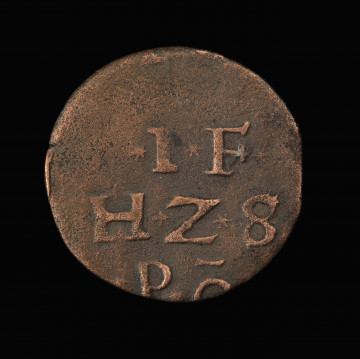
Sherf
1591
National Museum in Szczecin
Part of the collection: Pomeranian coins
The two-shilling coins are one of the most recognisable Pomeranian coins. Following the same iconographic pattern and minted en masse by the last Griffins (between 1594 and 1629) and the Swedish rulers of divided Pomerania (between 1656 and1670), these heavily contributed to inflation and the great monetary crisis known as the Kipper und Wipper. It is believed that it was with the two-shilling coins that Bogislaw XIV paid a tax for the defence of the Reich in the course of the Thirty Years' War, which amounted to more than 80,000 thalers. The last Pomeranian ruler produced them in three separate mints, an official one in Szczecin and two illegal ones, in Darłowo and Koszalin. It is estimated that more than eight million pieces of these credit denominations were minted in dozens of varieties in just two years, between 1621 and 1622. The coins are free of signatures and the distribution between the mints is not entirely certain. In Darłowo, the production of two-schilling coins began in 1620 and lasted two or three years, depending on the distinctive features adopted for this mint. The basic distinguishing feature of the Darłowo mint is the rosette in the rim and the absence of the letters DG (for Dei Gratia - from God's grace) in the titulature. It is notable that the Darłowo coins from 1620-1621 are more scarce than the others and finely crafted. In 1622, at the peak of inflation, however, their devaluation and counter-signing in north-western Germany was also unavoidable. Genowefa Horoszko
Other names
Dopopelschilling
Author / creator
Object type
schilling
Technique
coining
Material
silver
Origin / acquisition method
acquisition
Creation time / dating
Creation / finding place
Owner
Muzeum Narodowe w Szczecinie
Identification number
Location / status